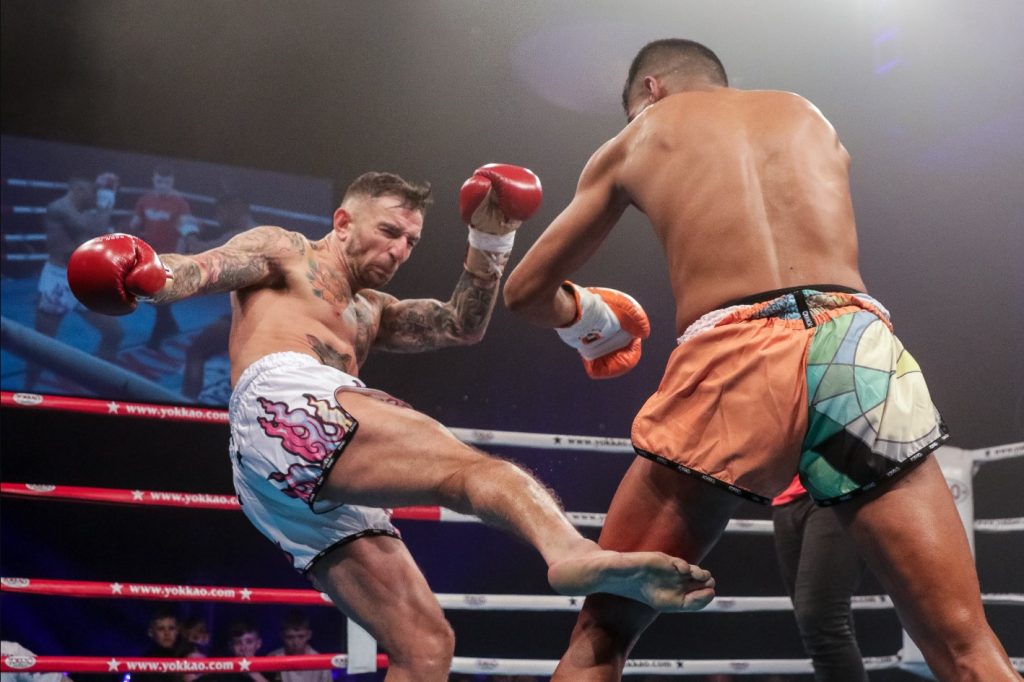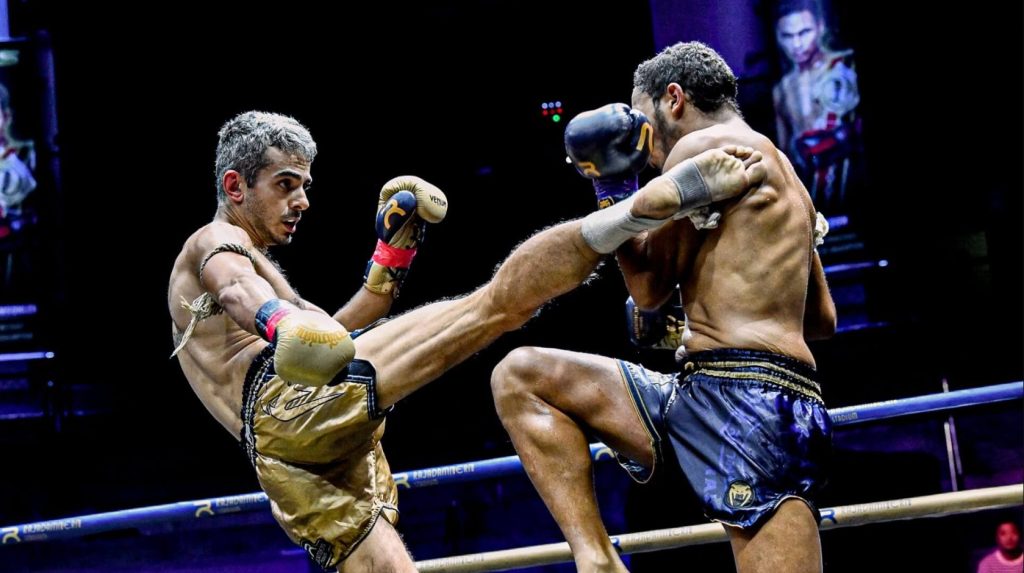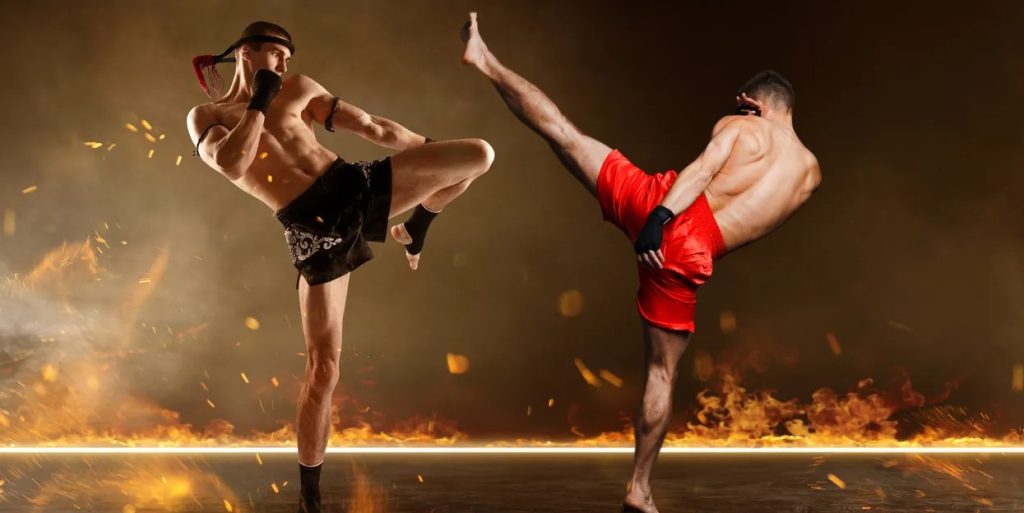Muay Thai, the national sport of Thailand, is renowned for its powerful and diverse kicking techniques. Known as the “Art of Eight Limbs,” Muay Thai uses punches, elbows, knees, and legs to strike, but kicks are especially vital—often the most damaging and effective part of a fighter’s arsenal. Mastering how to kick properly not only increases striking power but also minimizes injury risk and improves balance, timing, and control.
Table of Contents
1. Why Kicking is Crucial in Muay Thai

Kicks serve multiple purposes in Muay Thai:
- Inflict damage
- Control distance
- Weaken the opponent’s guard and stamina
- Earn points in scoring systems
- Set up combinations
Muay Thai fighters are often judged on the power and effectiveness of their kicks. Therefore, technique and execution matter deeply—not just volume.
2. Types of Kicks in Muay Thai
Before learning how to execute kicks, it’s helpful to know the main types of kicks used in Muay Thai:
| Kick Type | Target Areas | Purpose |
|---|---|---|
| Roundhouse Kick | Legs, body, head | Power strikes, damaging |
| Teep (Push Kick) | Midsection, thigh, face | Distance control, disruption |
| Low Kick (Leg Kick) | Thigh, calf | Limit mobility, score points |
| High Kick | Head, neck | Knockout strikes |
| Switch Kick | Body, head | Speed variation, offensive confusion |
| Spinning Heel Kick | Head, body | Surprise, knockout potential |
3. Mechanics of a Muay Thai Kick
Let’s focus on the Muay Thai roundhouse kick, often considered the signature technique.
Step-by-Step Guide: Roundhouse Kick
| Step | Details |
|---|---|
| 1. Stance | Stand in traditional Muay Thai stance. Feet shoulder-width apart, hands up, elbows in. |
| 2. Pivot Lead Foot | Rotate your lead foot outward (~45–90°). This opens the hips. |
| 3. Swing Hip | The power comes from the hip. Turn your hip over aggressively as you initiate the kick. |
| 4. Lift Kicking Leg | Bring your rear leg up in a diagonal arc, aiming with the shin. |
| 5. Hit with the Shin | Target the thigh, ribs, or head. The shin—not the foot—makes contact. |
| 6. Arm Counterbalance | Swing the same-side arm downward to generate torque and maintain balance. |
| 7. Recoil or Step Down | Either return your leg quickly or step down into position. |
Key Principles
- Torque = Power: Power is generated through rotation of the hips and shoulders, not just leg muscle.
- Shin over foot: Always strike with the shin to avoid injuring your foot or toes.
- Balance is vital: Maintain posture during and after the kick to avoid counters.
4. Common Mistakes and How to Fix Them

Even experienced practitioners can fall into bad habits. Here’s how to avoid them:
| Mistake | Why It’s a Problem | Correction |
|---|---|---|
| Kicking with the foot | Higher injury risk, less impact | Focus on rotating hip and striking with the shin |
| Lack of hip rotation | Weak power, poor form | Drill hip rotation separately |
| Not pivoting the lead foot | Limits range and torque | Practice pivots with no kick first |
| Dropping both hands | Leaves head exposed | Drop only same-side arm, keep other up |
| Poor recoil | Vulnerable to counter-attack | Always return leg to stance or step off |
5. Drills to Improve Kicking Technique
| Drill Name | Purpose | Repetitions |
|---|---|---|
| Wall Pivot Drill | Improves balance and pivot mechanics | 3 sets of 10 per leg |
| Bag Kicks (Heavy Bag) | Develops power, timing | 3 sets of 20 per side |
| Shadow Kicking | Focus on form and technique | 3 rounds (3 min each) |
| Teep Accuracy Drill | Targets balance and push control | Aim for a fixed target 10 times |
| Thai Pad Combinations | Real-time feedback on form and speed | With coach, 3–5 rounds |
💡 Pro Tip:
Slow it down before you speed it up. Performing kicks slowly with perfect form is more beneficial than rushing with sloppy technique.
6. Advanced Kicking Techniques
Once basic kicks are mastered, fighters often incorporate variations to increase unpredictability.
| Technique | Application | Example Scenario |
|---|---|---|
| Switch Kick | Swap stance before kicking for speed | Quick body or head kick from left leg |
| Step-Up Low Kick | Step in to close distance and land low kick | Against an opponent backing away |
| Spinning Back Kick | Use rotational force for powerful impact | Counterattack after opponent misses |
| Jumping Roundhouse | Adds vertical motion, more dramatic impact | Surprise move against tired opponent |
7. Strategy: When and Where to Use Kicks
Kicks in Muay Thai aren’t just about power—they’re strategic tools.
| Scenario | Best Kick to Use | Reason |
|---|---|---|
| Opponent Charging In | Teep or low kick | Stops momentum |
| Close Range / Clinch Break | Roundhouse to body | Quick damage after disengaging |
| Out of Range Distance | High kick or step-in roundhouse | Exploit reach advantage |
| Opponent Dropping Guard | High switch kick | Capitalize on exposure |
Using the wrong kick at the wrong time can drain energy or open you up to counters. Knowing when to apply each technique is what separates good fighters from great ones.
8. Training Equipment for Kicking Practice

To train Muay Thai kicks effectively and safely, use proper equipment:
| Gear | Purpose |
|---|---|
| Shin Guards | Protect your shins during sparring |
| Thai Pads | Absorb powerful strikes during pad work |
| Heavy Bag | Build power and endurance |
| Ankle Supports | Stabilize joints during high-intensity kicking |
| Resistance Bands | Help build hip and core strength |
Building a Strong Kicking Game
Kicking in Muay Thai is an art that balances power, precision, and timing. Whether you’re training to fight, improve fitness, or deepen your understanding of martial arts, developing strong kicking fundamentals is essential.
Key Takeaways:
- Focus on mechanics: Hip rotation and balance are everything.
- Practice deliberately: Slow, technical drills beat mindless repetition.
- Build strength: Flexibility and conditioning enhance technique.
- Use kicks strategically: Don’t throw kicks just to look active—make them count.
The best Muay Thai fighters don’t just kick hard—they kick smart. And with consistent practice, so can you.


Useful information. Fortunate me I discovered your web site by chance, and I am stunned why this coincidence didn’t came about in advance!
I bookmarked it.